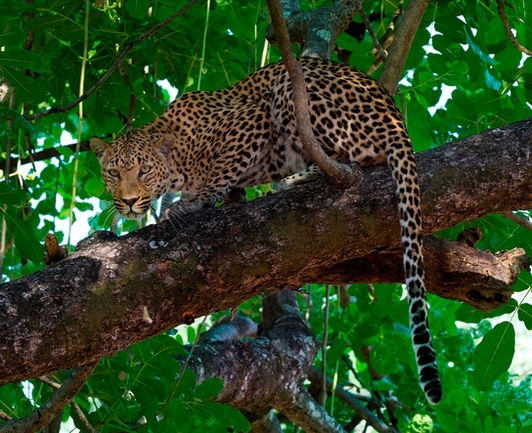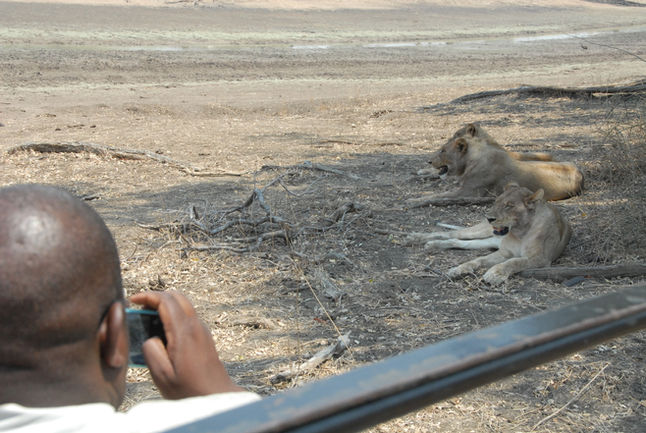
The Wildlife of Zambia
Wild Dogs are regulars in Luangwa, where guests often report that they see these colourful dogs in true packs, not a common sighting across the rest of Africa.
Hundreds of bird also species make the Luangwa Valley their home. The Carmine Bee Eaters come by the thousands to nest in the cliffs of the Luangwa. Their amazing coloring of carmine red, baby blue and midnight blue make them in incredible sight. At the start of the season yellow crested storks by the hundreds come to nest in high trees which become covered in the feathers and down of the fledglings before they fly free. The wildlife is diverse & abundant...

South Luangwa National Park
Located in eastern Zambia, the southernmost of three national parks in the valley of the Luangwa River, is a world-renowned wildlife haven. Concentrations of game along the meandering Luangwa River and its lagoons are amongst the most intense in Africa. The river teems with hippo and crocodile and provides a lifeline for one of the greatest diversities of habitat and wildlife, supporting more than 60 species of mammals and over 400 species of birds.

South Luangwa National Park supports large populations of Thornicroft’s giraffe, and herds of elephants and Cape buffaloes often several hundred strong. It is one of the best-known national parks in Africa for walking safaris. Founded as a game reserve in 1938, it became a national park in 1972 and now covers 9,050 km2.
The park spans two ecoregions, both of them woodland savannah, distinguished by the dominant tree: Southern Miombo woodlands cover the higher slopes of the valley, while Zambezian and Mopane woodlands cover the bottom of the valley. The Mopane tree tolerates the higher temperatures and lower rainfall found at lower elevations than miombo trees which are found on the higher plateau.

Within these woodland savannahs are larger patches of grassland, so that grazers such as zebra and leaf browsers such as giraffe are found in profusion in the same areas.

Patches of flooded grassland habitats (floodplains) are found close to the river, on which hippopotamus graze at night. Their dung released into the river fertilises its waters and sustains the fish population which in turn sustains the crocodiles.
The Luangwa valley, continued to the west by the Lunsemfwa River valley, contains some varieties of animals such as Cookson’s wildebeest and Crawshay’s zebra which are endemic or near-endemic to the valley. It also represents something of a natural barrier to human migration and transport, no roads cross it and this has helped conserve its wildlife.
This river runs right next to Zikomo Safari Lodge. It is the bringer of all life to the area and a world-renowned wildlife haven. Here, at the height of the dry season, all the animals are drawn to the river. It is the perfect time to see the full wonder of this incredible place.
Concentrations of game along the meandering Luangwa River and its lagoons are amongst the most intense in Africa.

The camp’s location boasts some of the world's finest wildlife viewing: solitary leopards prowl the bush, prides of lions hunt on the floodplains, herds of elephant forage around and in the grounds of the camp.

It is not unusual to be awakened by the sound of an elephant having her meal in the tree next to your window or a hippo mowing the grass with his giant mouth. Nor thhe roaring of a male lion or the chuffing of a leopard are followed by the alarm calls of baboons.
During dry season, large herds of buffalo follow the dwindling water in the Luangwa River and the flood plain is dotted with giraffe and impala picking off the last of the grasses.
Loango Lodge





















